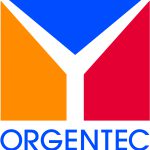Endomysium is the thin connective tissue layer that covers individual muscle fibres. Anti-endomysial antibodies (AEA, or: EMA) may be detected in people suffering from celiac disease. AEA develop as part of the ongoing damage to the intestinal lining caused by autoimmune processes involved in the disease.
It has been found that the antibodies detected in the anti-endomysial antibodies test actually are tissue-transglutaminase antibodies (anti-tTG), in the majority of cases of the IgG A class. Almost 100% of patients with active celiac disease and 70% of patients with dermatitis herpetiformis will have anti-endomysial antibodies of the IgA class.
The AEA test, an immunofluorescence assay using human HEp-2 cells, is more difficult to perform and to interpret properly than the anti-tTG ELISAs.
Tests offered by ORGENTEC Diagnostika
ELISA/Alegria®:
Anti-Tissue-Transglutaminase IgA (ORG 540A, ORG 240A)
Anti-Tissue-Transglutaminase IgG (ORG 540G, ORG 240G)
Anti-Tissue-Transglutaminase Screen (ORG 540S, ORG 240S)
Immunoblot:
Gastro-5-Line (ORG 740)
IFA:
Anti-Endomysium Antibodies (AEA) (ORG 872)


For the anti endomysium alegria test, how much of sample we should take (serum) ,and what is the time of detection (how long time we should wait to get the results)
The experimental procedure is decribed in detail in the Instruction for Use provided with each test kit. You can download a pdf-copy of the Instructions of Use for all ORGENTEC test kits from the ORGENTEC-Homepage.
For example:
Anti-Tissue-Transglutaminase by Alegria
Anti-Endomysium Antibodies by indirect immunofluorescence